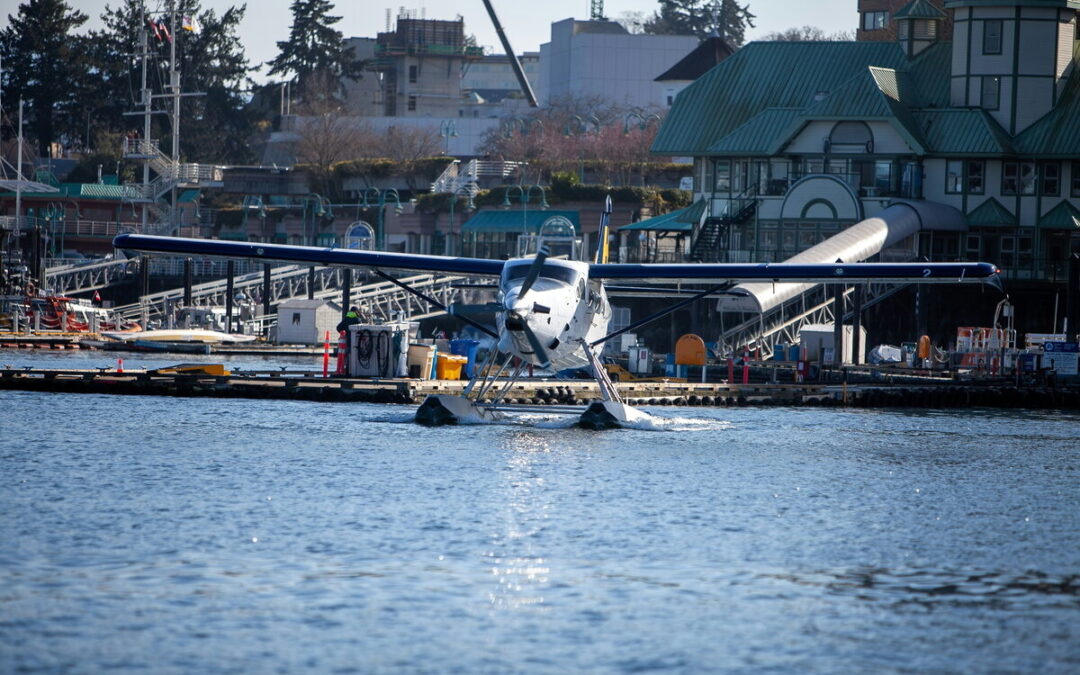
7 Steps to Starting a Tour Bus Company in BC
7 Steps to Starting a Tour Bus Company in BC
Driving around, showing people the sights or touring a vineyard, what a great way to make a living! After all, you know the Cowichan Valley like the back of your hand. Sound like fun? It is, but it takes a lot more than a winning smile, good driving skills, and an easy ability to get along with people.
Starting a tour bus company in British Columbia can be a rewarding entrepreneurial venture given the province’s unique geography, growing population, and tourism industry. The bus industry plays a critical role in connecting communities, providing affordable transportation, and catering to tourists exploring the natural beauty of the region.
However, the process of starting such a business is highly regulated, and it requires a comprehensive understanding of legal requirements, market dynamics, financial planning, and operational logistics. Let’s take a look at what’s involved!
1. Conduct Market Research
The first step in starting a tour bus company is to understand the market landscape. British Columbia is a province with diverse transportation needs, including urban commuter services, rural transport, long-distance travel, and seasonal tourism routes. Before investing in the business, you should analyze the demand for tour bus services in your target areas. Let’s look at the Cowichan Valley in particular:
-
-
-
- Target Demographics: Who are your potential customers? These could be local commuters, tourists, students, or elderly passengers who need reliable and affordable transportation. Do you want to take people on wine tours or pub crawls? Provide shuttle service to the airport? Take people to medical appointments? Tour the Gulf Islands? Bachelor/ette parties?
- Existing Competition: Identify other tour bus operators in the area and assess their service offerings. Determine if there are gaps in the market that your business could fill.
- Tourism Routes: British Columbia attracts millions of tourists each year, and there is a high demand for scenic bus tours to places like the Cowichan Valley, Victoria, and even farther up Island.
- Regulatory Environment: Familiarize yourself with provincial regulations and licensing requirements, as these can vary based on the region and type of service you intend to provide.
-
-
2. Create a Business Plan
A well-thought-out business plan is essential for the success of any new business. It should detail the company’s mission, objectives, operational structure, financial projections, and marketing strategy, and include:
-
-
-
- Executive Summary: A brief overview of your company, including the services you will offer, your target market, and what makes your service unique.
- Services Offered: The specific bus services your company will provide. Will you focus on city commuting, intercity travel, tour services, or charter services? Consider the different routes, frequencies, and pricing models.
- Financial Plan: The startup costs, such as purchasing buses, acquiring necessary licenses, and hiring drivers. Include projected revenue, operating costs, and expected profit margins. Consider the financial viability of your business model and funding options.
- Marketing Strategy: How you will promote your bus services. Will you rely on online marketing, partnerships with local businesses, or advertising through tourism agencies? Offer incentives, such as discounts or loyalty programs, to attract passengers.
-
-
3. Licensing and Legal Requirements
Operating in British Columbia requires compliance with various regulations and licensing requirements for limo, shuttle bus or other passenger directed vehicles (PDV):
-
-
-
- Passenger Transportation License: In BC, bus operators must obtain a Passenger Transportation License (PTL) with special authorization to operate a limo or shuttle service from the Passenger Transportation Board (PTB). This license is required for all commercial passenger transport services. The application process involves proving that you meet the necessary safety and financial standards and demonstrating that your services will meet the demand in your area.
- Operating Authority: You will need to obtain operating authority from the PTB. You must submit a business plan and comply with fare regulations. If you’re providing charter or tour services, the licensing requirements may vary based on your specific services.
- Insurance and Safety Regulations: All buses must be insured, and safety standards must be met, including vehicle inspections and maintenance. The insurance coverage will include general liability, passenger liability, and vehicle damage coverage. You’ll also need to comply with provincial transportation regulations related to vehicle safety, such as ensuring that drivers meet licensing and health standards. The National Safety Code Program regulates vehicles operating under the Passenger Transportation Act and commercial vehicles that seat 10 or more passengers plus the driver.
- Driver Qualifications: Bus drivers must hold a Class 2 commercial driver’s license (or higher, depending on the type of bus and the routes). Limo or bus drivers with vehicles with a seating capacity of 25 people must be at least 19 years old and hold a Class 4 commercial driver’s license. Drivers should have a clean driving record, as well as training in passenger safety protocols and emergency response. Certain medical conditions may preclude you from becoming a commercial driver. ICBC can help with ensuring compliance with all the applicable laws and regulations.
-
-
4. Fleet Management and Equipment
Selecting the right buses for your company is a critical decision. The type and size of the buses you choose will depend on the services you plan to offer, the routes you will operate, and your budget. Here are some factors to consider:
-
-
-
- Type of Buses: You can opt for standard commuter buses, luxury coaches, or smaller minibuses, depending on your target market. If you’re offering tour services, consider larger buses that offer more comfort and amenities such as Wi-Fi, air conditioning, and reclining seats.
- Maintenance and Repairs: Regular maintenance is crucial to ensure the safety of your passengers and avoid costly repairs. You should either hire an in-house mechanic or establish a relationship with a local service provider. Maintenance costs will be a significant part of your operating expenses.
- Fuel Efficiency and Environmental Considerations: Given the rising concern about environmental sustainability, it’s worth considering eco-friendly vehicles. Hybrid or electric buses are becoming more popular in the transportation industry as they reduce emissions and fuel costs.
- Fleet Financing: Purchasing buses is a substantial capital investment. You may need to explore financing options, including loans, leasing, or seeking investors to fund the acquisition of buses.
-
-
5. Hiring and Training Employees
If you have plans to expand beyond a one-person operation, you’ll need help. Key hires will include:
-
-
-
- Bus Drivers: Hiring qualified, experienced, and customer-oriented drivers is crucial for your company’s reputation. Drivers should undergo training on safety protocols, passenger service, and local traffic laws.
- Customer Service and Administrative Staff: You will need office staff to handle bookings, inquiries, and ticket sales. If you offer online booking, a tech team will be essential to maintain your website and mobile app.
- Maintenance Team: A reliable maintenance team ensures the vehicles are operating safely and efficiently. Hiring experienced mechanics or partnering with a third-party service provider can help ensure the longevity of your fleet.
-
-
6. Marketing and Growing Your Brand
Effective marketing strategies are crucial for attracting passengers and ensuring the long-term success of your bus company. Some things to think about include:
-
-
-
- Partnerships with Local Businesses: Forge relationships with hotels, tourist attractions, and local events to offer joint promotions or special packages.
- Online Presence: Develop a user-friendly website where customers can check schedules, book tickets, and get updates on routes. Social media marketing is also vital to reach a wider audience and engage with potential customers.
- Customer Loyalty Programs: Offering discounts, rewards for frequent riders, or group deals can help retain customers and encourage word-of-mouth referrals.
-
-
7. Ensuring Sustainability and Growth
Finally, ensure that your business is adaptable and can grow over time. Stay informed about new transportation trends, technological advancements, and shifts in customer preferences. Consider expanding your fleet, adding new routes, or diversifying your services based on customer feedback and market demand.





